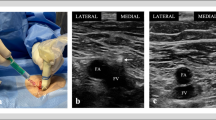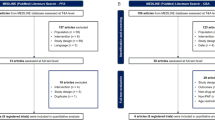Abstract
Stroke prevention is the primary goal in atrial fibrillation (AF) given its clinical and socioeconomic impact. With AF, the prevalence of thromboembolic stroke continues to rise and there is an urgent need to develop better strategies of stroke prevention. Warfarin, although effective when used appropriately, is burdened by underutilization, narrow therapeutic windows, and life-threatening bleeding complications. Novel pharmacologic agents have been plagued by off-target toxicity and only modest improvement in bleeding complications over warfarin. Because most thromboemboli arise from the left atrial appendage (LAA), surgical exclusion of the LAA is often used in AF patients undergoing cardiac surgery. Percutaneous device LAA closure has now been developed as an adjunct and as an alternative to pharmacotherapy in patients with AF. Promising randomized data are available with the WATCHMAN device, while several other devices are in various stages of clinical and preclinical development.

Similar content being viewed by others
Abbreviations
- ACTIVE:
-
Atrial Fibrillation Clopidogrel Trial With Irbesartan for Prevention of Vascular Events
- ASAP:
-
ASA Plavix Feasibility Study With WATCHMAN Left Atrial Appendage Closure Technology
- CAP:
-
Continued Access PROTECT AF
- EXCLUDE:
-
Exclusion of the Left Atrial Appendage With the AtriClip LAA Exclusion Device in Patients Undergoing Concomitant Cardiac Surgery
- LAAOS:
-
Left Atrial Appendage Occlusion Study
- LAAOS II:
-
Left Atrial Appendage Occlusion Study II
- MATCH:
-
Management of Atherothrombosis With Clopidogrel in High-Risk Patients
- PROTECT AF:
-
WATCHMAN Left Atrial Appendage System for Embolic Protection in Patients With Atrial Fibrillation
- RE-LY:
-
Randomized Evaluation of Long-Term Anticoagulation Therapy
- SPORTIF:
-
Stroke Prevention Using an Oral Thrombin Inhibitor in Atrial Fibrillation
References
Papers of particular interest, published recently, have been highlighted as: • Of importance •• Of major importance
Lloyd-Jones D, Adams R, Carnethon M, et al.: Heart disease and stroke statistics—2009 update: a report from the American Heart Association Statistics Committee and Stroke Statistics Subcommittee. Circulation 2009, 119:e21–e181.
• Crandall MA, Bradley DJ, Packer DL, Asirvatham SJ: Contemporary management of atrial fibrillation: update on anticoagulation and invasive management strategies. Mayo Clin Proc 2009, 84:643–662. This is a comprehensive review of the most up-to-date management strategies for AF.
Miyasaka Y, Barnes ME, Gersh BJ, et al.: Secular trends in incidence of atrial fibrillation in Olmsted County, Minnesota, 1980 to 2000, and implications on the projections for future prevalence. Circulation 2006, 114:119–125.
Ezekowitz MD, Bridgers SL, James KE, et al.: Warfarin in the prevention of stroke associated with nonrheumatic atrial fibrillation. Veterans Affairs Stroke Prevention in Nonrheumatic Atrial Fibrillation Investigators. N Engl J Med 1992, 327:1406–1412.
Blackshear JL, Odell JA: Appendage obliteration to reduce stroke in cardiac surgical patients with atrial fibrillation. Ann Thorac Surg 1996, 61:755–759.
Sudlow M, Thomson R, Thwaites B, et al.: Prevalence of atrial fibrillation and eligibility for anticoagulants in the community. Lancet 1998, 352:1167–1171.
Brass LM, Krumholz HM, Scinto JM, Radford M: Warfarin use among patients with atrial fibrillation. Stroke 1997, 28:2382–2389.
Fountain R, Holmes DR Jr, Hodgson PK, et al.: Potential applicability and utilization of left atrial appendage occlusion devices in patients with atrial fibrillation. Am Heart J 2006, 152:720–723.
Sievert H, Lesh MD, Trepels T, et al.: Percutaneous left atrial appendage transcatheter occlusion to prevent stroke in high-risk patients with atrial fibrillation: early clinical experience. Circulation 2002, 105:1887–1889.
Stroke Risk in Atrial Fibrillation Working Group: Comparison of 12 risk stratification schemes to predict stroke in patients with nonvalvular atrial fibrillation. Stroke 2008, 39:1901–1910.
Gage BF, Waterman AD, Shannon W, et al.: Validation of clinical classification schemes for predicting stroke: results from the National Registry of Atrial Fibrillation. JAMA 2001, 285:2864–2870.
Predictors of thromboembolism in atrial fibrillation: II. Echocardiographic features of patients at risk. The Stroke Prevention in Atrial Fibrillation Investigators [no authors listed]. Ann Intern Med 1992, 116:6–12.
Singer DE, Albers GW, Dalen JE, et al.: Antithrombotic therapy in atrial fibrillation: American College of Chest Physicians Evidence-Based Clinical Practice Guidelines (8th Edition). Chest 2008, 133:546S–592S.
Singer DE, Chang Y, Fang MC, et al.: The net clinical benefit of warfarin anticoagulation in atrial fibrillation. Ann Intern Med 2009, 151:297–305.
Hart RG, Benavente O, McBride R, Pearce LA: Antithrombotic therapy to prevent stroke in patients with atrial fibrillation: a meta-analysis. Ann Intern Med 1999, 131:492–501.
Diener HC, Bogousslavsky J, Brass LM, et al.: Aspirin and clopidogrel compared with clopidogrel alone after recent ischaemic stroke or transient ischaemic attack in high-risk patients (MATCH): randomised, double-blind, placebo-controlled trial. Lancet 2004, 364:331–337.
Connolly S, Pogue J, Hart R, et al.: Clopidogrel plus aspirin versus oral anticoagulation for atrial fibrillation in the Atrial fibrillation Clopidogrel Trial with Irbesartan for prevention of Vascular Events (ACTIVE W): a randomised controlled trial. Lancet 2006, 367:1903–1912.
Connolly SJ, Pogue J, Hart RG, et al.: Effect of clopidogrel added to aspirin in patients with atrial fibrillation. N Engl J Med 2009, 360:2066–2078.
• Connolly SJ, Ezekowitz MD, Yusuf S, et al.: Dabigatran versus warfarin in patients with atrial fibrillation. N Engl J Med 2009, 361:1139–1151. This is a landmark randomized controlled trial of novel pharmacotherapy for preventing thromboembolic events in AF.
Wysowski DK, Nourjah P, Swartz L: Bleeding complications with warfarin use: a prevalent adverse effect resulting in regulatory action. Arch Intern Med 2007, 167:1414–1419.
Landefeld CS, Beyth RJ: Anticoagulant-related bleeding: clinical epidemiology, prediction, and prevention. Am J Med 1993, 95:315–328.
• Fang MC, Go AS, Chang Y, et al.: Death and disability from warfarin-associated intracranial and extracranial hemorrhages. Am J Med 2007, 120:700–705. This is an in-depth look at life-threatening hemorrhagic risks associated with chronic warfarin therapy.
Go AS, Hylek EM, Borowsky LH, et al.: Warfarin use among ambulatory patients with nonvalvular atrial fibrillation: the anticoagulation and risk factors in atrial fibrillation (ATRIA) study. Ann Intern Med 1999, 131:927–934.
White HD, Gruber M, Feyzi J, et al.: Comparison of outcomes among patients randomized to warfarin therapy according to anticoagulant control: results from SPORTIF III and V. Arch Intern Med 2007, 167:239–245.
Holmes DR Jr, Kereiakes DJ, Kleiman NS, et al.: Combining antiplatelet and anticoagulant therapies. J Am Coll Cardiol 2009, 54:95–109.
•• Hara H, Virmani R, Holmes DR Jr, et al.: Is the left atrial appendage more than a simple appendage? Catheter Cardiovasc Interv 2009, 74:234–242. This is an excellent review of anatomic, functional, and pathologic features of the LAA as they relate to surgical or percutaneous closure.
Veinot JP, Harrity PJ, Gentile F, et al.: Anatomy of the normal left atrial appendage: a quantitative study of age-related changes in 500 autopsy hearts: implications for echocardiographic examination. Circulation 1997, 96:3112–3115.
Silvestry FE, Kerber RE, Brook MM, et al.: Echocardiography-guided interventions. J Am Soc Echocardiogr 2009, 22:213–231; quiz 316–317.
Ho IC, Neuzil P, Mraz T, et al.: Use of intracardiac echocardiography to guide implantation of a left atrial appendage occlusion device (PLAATO). Heart Rhythm 2007, 4:567–571.
Madden JL: Resection of the left auricular appendix; a prophylaxis for recurrent arterial emboli. J Am Med Assoc 1949, 140:769–772.
•• Dawson AG, Asopa S, Dunning J: Should patients undergoing cardiac surgery with atrial fibrillation have left atrial appendage exclusion? Interact Cardiovasc Thorac Surg 2010, 10:306–311. This is a systematic review of literature relating to surgical closure of the LAA.
Garcia-Fernandez MA, Perez-David E, Quiles J, et al.: Role of left atrial appendage obliteration in stroke reduction in patients with mitral valve prosthesis: a transesophageal echocardiographic study. J Am Coll Cardiol 2003, 42:1253–1258.
Healey JS, Crystal E, Lamy A, et al.: Left Atrial Appendage Occlusion Study (LAAOS): results of a randomized controlled pilot study of left atrial appendage occlusion during coronary bypass surgery in patients at risk for stroke. Am Heart J 2005, 150:288–293.
Blackshear JL, Johnson WD, Odell JA, et al.: Thoracoscopic extracardiac obliteration of the left atrial appendage for stroke risk reduction in atrial fibrillation. J Am Coll Cardiol 2003, 42:1249–1252.
Meier B, Palacios I, Windecker S, et al.: Transcatheter left atrial appendage occlusion with Amplatzer devices to obviate anticoagulation in patients with atrial fibrillation. Catheter Cardiovasc Interv 2003, 60:417–422.
Ostermayer SH, Reisman M, Kramer PH, et al.: Percutaneous left atrial appendage transcatheter occlusion (PLAATO system) to prevent stroke in high-risk patients with non-rheumatic atrial fibrillation: results from the international multi-center feasibility trials. J Am Coll Cardiol 2005, 46:9–14.
• Block PC, Burstein S, Casale PN, et al.: Percutaneous left atrial appendage occlusion for patients in atrial fibrillation suboptimal for warfarin therapy: 5-year results of the PLAATO (Percutaneous Left Atrial Appendage Transcatheter Occlusion) Study. JACC Cardiovasc Interv 2009, 2:594–600. This discusses long-term results of the first LAA occlusion device to gain CE mark approval.
Fountain RB, Holmes DR, Chandrasekaran K, et al.: The PROTECT AF (WATCHMAN Left Atrial Appendage System for Embolic PROTECTion in Patients with Atrial Fibrillation) trial. Am Heart J 2006, 151:956–961.
•• Holmes DR, Reddy VY, Turi ZG, et al.: Percutaneous closure of the left atrial appendage versus warfarin therapy for prevention of stroke in patients with atrial fibrillation: a randomised non-inferiority trial. Lancet 2009, 374:534–542. This is a landmark randomized controlled trial of device closure of the LAA.
Friedman PA, Asirvatham SJ, Dalegrave C, et al.: Percutaneous epicardial left atrial appendage closure: preliminary results of an electrogram guided approach. J Cardiovasc Electrophysiol 2009, 20:908–915.
Singh SM, Dukkipati SR, d'Avila A, et al.: Percutaneous left atrial appendage closure with an epicardial suture ligation approach: a prospective randomized pre-clinical feasibility study. Heart Rhythm 2010, 7:370–376.
•• Holmes DR Jr, Schwartz RS: Left atrial appendage occlusion eliminates the need for warfarin. Circulation 2009; 120:1919–1926; discussion 1926. This is an informative and insightful commentary on the role of the LAA occlusion in replacing chronic warfarin therapy in patients with AF.
Disclosure
Dr. David R. Holmes Jr and the Mayo Clinic have a financial interest in technology related to this research. That technology has been licensed to Atritech, and the Mayo Clinic and Dr. Holmes have contractual rights to receive future royalties from this license. To date, no royalties have been received by either the Mayo Clinic or Dr. Holmes. No other potential conflicts of interest relevant to this article were reported.
Author information
Authors and Affiliations
Corresponding author
Rights and permissions
About this article
Cite this article
Singh, I.M., Holmes, D.R. Left Atrial Appendage Closure. Curr Cardiol Rep 12, 413–421 (2010). https://doi.org/10.1007/s11886-010-0122-9
Published:
Issue Date:
DOI: https://doi.org/10.1007/s11886-010-0122-9




